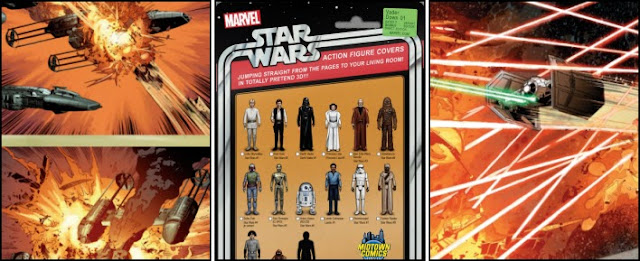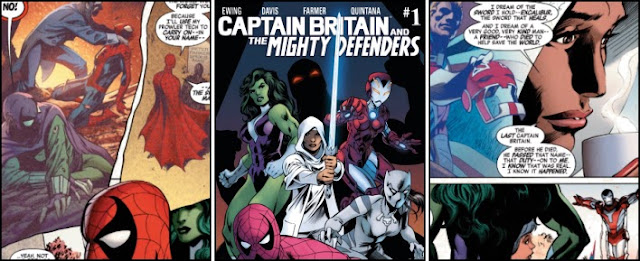 |
| UBER No. 21, December 2014 |
Despite selling a disappointing 5,858 issues in January 2015, approximately
five hundred copies less than its predecessor, creator Kieron Gillen need not
have worried as to whether this comic book’s readers would find its narrative
both “interesting and enjoyable.” For whilst the twenty-two page periodical
surprisingly only dedicates less than half its contents upon Maria and
Sieglinde’s “meet[ing] in Kiev for a strong exchange of words and/or blows”,
this penultimate chapter in “The Shadow War” story-arc ‘packs plenty of additional
punch’ by surrounding the “first duel between fully activated Ubermensch-class
enhanced humans” with plenty of additional drama and action.
For starters the Stafford-born writer finally divulges “what’s going on
with Hitler” by having Joseph Goebbels’ rather obvious Fuhrer clone obliterate
the corpse of a medical experiment courtesy of a well-placed, and gratuitously illustrated,
halo effect. Ever since “the apparent death” of Adolf “at the hands of Siegmund”
it has always been evident to followers of this title that the Reich Minister
of Propaganda had arranged for someone else to take over the leader’s identity.
This scene however provides the first actual proof that the replica is an
'Uber' of some kind… and one which the German politician even considers
to be a viable “suitor” for his own wife Magda!?!
Just as unforeseen is the British former music journalist’s revelation that
“Mister long-suffering Tank-man bodyguard Conrad” is actually the “active” spy
at Bletchley Park. Admittedly artist Daniel Gete’s overly graphic love-scene
between the undercover Nazi agent and Stephanie may be a little lewd for some. But
the Spaniard’s detailed panels depicting ‘heavy petting’, from a plot
perspective at least, is understandably the key to the British scientist
realising just who the top secret research department’s traitor is; “A Tank-Man wouldn’t sweat from sex.”
The highlight of this comic though is undoubtedly Katyusha’s pummelling
of Battleship Sieglinde, and the subsequent understandable concern (and shock)
etched upon the face of her colleague Siegfried when he himself observes the terrifyingly
raw power of the Third Reich’s latest foe. “Capable of shaping the battlefield
to her liking, [and] claiming the high ground…” Maria Andreevna’s long-awaited
and highly-anticipated ‘fist-fight’ with Winston Churchill’s assassin is disconcertingly
rather one-sided, despite the “blonde witch” almost catching the Soviet Forces off-guard
at the start of the contest. Although the combat’s all-too early resolution,
which sees Klaudia unceremoniously “propelled… into the Dnieper”, isn’t nearly as
disappointing as some of Caanan White’s pencilling during the fracas.
 |
| The regular cover art of "UBER" No. 21 by Caanan White |
































